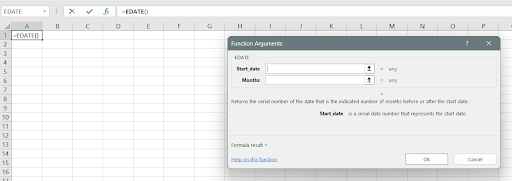Found a total of 10000 related content

The Subtle Differences: __FUNCTION__ vs. __METHOD__ Explained
Article Introduction:FUNCTION returns the name of the current function or method, and does not contain the class name; 2. When METHOD is used in a method, it will return the format of "class name:: method name", which contains the context information of the class; 3. The two behave the same in independent functions; 4. When debugging object-oriented code, it is recommended to use METHOD to obtain more complete call information; 5. If you need complete namespace information, you need to combine get_class($this) or reflection mechanism. Therefore, the choice depends on the level of detail of the desired context.
2025-08-01
comment 0
1028

Magic Methods and Predefined Constants in PHP
Article Introduction:Core points
PHP provides predefined constants and magic methods to enhance code functionality. Predefined constants provide read-only information about code and PHP, while magic methods are names reserved in the class to enable special PHP features.
Predefined constants (all capital letters enclosed with double underscores) provide information about the code. Examples include __LINE__ (returns the line number in the source file), __FILE__ (represents the file name, including its full path), __DIR__ (represents the file path only), __CLASS__ (returns the name of the current class), __FUNCTION__ (returns the name of the current function), __METHOD__ (represents the name of the current method), and
2025-02-28
comment 0
1243

php get first day of month
Article Introduction:To get the first day of a certain month, it can be implemented through PHP built-in functions. The core methods include: 1. Use the date() function to directly construct the string of the first day of the current month; 2. Use strtotime() to obtain the timestamp; 3. Use the specified date to calculate the first day of the month; 4. Use the DateTime class for object-oriented style processing. In addition, attention should be paid to time zone settings, formatted output and application in database queries. These methods are flexible and suitable for different scenarios, the key is to choose the right approach according to your needs and pay attention to details such as time zone and format control.
2025-07-05
comment 0
544

WordPress User Role Filtering and Query Guide
Article Introduction:This article details various methods of querying data based on user roles in WordPress. Covering the official API function get_users(), the powerful WP_User_Query class, and tricks to use direct SQL queries in specific cases. The tutorial will use code samples to guide developers to efficiently and safely obtain user information for specified roles, and explore applicable scenarios and precautions for each method.
2025-08-12
comment 0
700

How to handle Date and Time operations in PHP?
Article Introduction:It is recommended to use the DateTime class for PHP processing date and time. 1. Use the DateTime class to replace old functions, with clear structure and support time zone settings; 2. Use DateTime to manage time and specify the target time zone before output; 3. Use DateInterval to calculate the time difference and obtain complete information such as year, month, and day; 4. Pay attention to avoid the influence of mixed use of date() functions, hard-coded time strings and daylight saving time.
2025-07-09
comment 0
328

php get day number of year
Article Introduction:To get the current date is the day of the year, it can be implemented through PHP's date() function with the format character 'z'. 1. Use date('z') to directly obtain the day of the year. The return value starts from 0, so 1 is required to add to the actual number of days; 2. If you need to process the specified date, you can calculate it in combination with strtotime() or DateTime class passing date parameters; 3. date('z') has automatically considered the impact of leap years and does not require manual adjustment; 4. It is recommended to use DateTime for object-oriented scenarios to facilitate expansion and maintenance.
2025-07-13
comment 0
249

How to use the EOMONTH function in Excel
Article Introduction:The EOMONTH function is used to calculate the last day of a certain month before and after a specified date. Its basic syntax is =EOMONTH(start_date,months), where start_date is the starting date and months is the number of months (positive numbers represent the month afterwards, and negative numbers represent the previous one). For example, =EOMONTH("2024-05-15",1) returns 2024-06-30, =EOMONTH(A1,-1) If A1 is 2024-05-15, it returns 2024-04-30. This function can be used to calculate the end of the quarter, the end of the sixth year or the end of the year, if using =EOMONTH(A1,MOD(3-MONTH(A1)
2025-07-31
comment 0
485

How to use the EDATE function in Excel
Article Introduction:Excel is a powerful tool for financial modeling and prediction, and one of the most valuable functions is the EDATE function. To add or subtract several months to a date in Excel, use the EDATE function. This function is simple, efficient and easy to operate. Its function is to return a serial number representing the date after the specified number of months is moved forward or backward from the specified date (start_date). EDATE is often used to calculate the maturity date or deadline on the same month as the issuance date, such as the calculation of key financial data such as loan repayment plans and retirement savings forecasts. As one of the trusted features in Excel, EDATE always provides accurate results. This article will take you to master Excel step by step
2025-08-12
comment 0
606

Cross-time zone data aggregation: Time processing strategies in MySQL and PHP
Article Introduction:This article aims to guide developers how to efficiently process time data across time zones in MySQL and PHP, especially when aggregation operations such as MIN/MAX are required based on the user-specified time zone. The article elaborates on the configuration and use of the MySQL CONVERT_TZ function, as well as the application of the PHP DateTime class, and provides specific code examples and best practice suggestions.
2025-08-24
comment 0
853

php find next occurrence of a day
Article Introduction:To find the date of the next specified day of the week, you can use PHP's DateTime class or strtotime function to implement it. It is recommended to use the DateTime class, such as $nextWednesday=newDateTime('nextWednesday') to get the next Wednesday; if you need to include today, use 'Wednesdaythisweek' as a parameter; you can flexibly control the time range by passing in strings like 'nextMonday', 'Mondaythisweek', and 'Mondaynextweek'; if you use the strtotime function, you can use $timestamp=strtoti
2025-07-12
comment 0
644

python docstring numpy style example
Article Introduction:This function calculates the mean and standard deviation of the array along the specified axis. The parameters include data (input data), axis (calculation axis), ddof (degree of freedom correction), and returns a dictionary containing 'mean' and 'std'. 1. Flatten the overall statistics when axis is None, 2. Calculate along the column when axis is 0, 3. Calculate along the row when axis is 1, 4. Ddof defaults to 0 (popular standard deviation), and when set to 1, it is the sample standard deviation. The function supports numerical type input and throws corresponding ValueError and TypeError exceptions.
2025-08-14
comment 0
650

PHP string similarity comparison tutorial
Article Introduction:This article describes how to compare the similarity of two strings in PHP, even if they are not exactly equal. With the similar_text() function, you can calculate the degree of similarity between two strings and get a value representing the percentage of similarity. This article will explain in detail the usage of the similar_text() function and provide sample code to help you understand how to apply this function in actual projects.
2025-08-23
comment 0
316

C object slicing example
Article Introduction:Object slicing occurs when the derived class object is passed or assigned to the base class object by a value, resulting in the loss of derived class members; 1. When the function parameter is the base class value type, passing the derived class object will trigger the slice, copying only the base class part; 2. Use pointers or references (such as constAnimal&) to avoid slicing, retaining the complete object type and virtual function behavior; 3. After slicing, the object type becomes a base class, and even if the virtual function exists, the derived class behavior cannot be restored; 4. Polymorphism should always be used with pointers or references to avoid value transfer. The correct way is to pass the object through references, thereby retaining the derived class information intact and calling the rewrite function correctly.
2025-08-06
comment 0
369

PHP string similarity comparison: use similar_text function
Article Introduction:This article describes how to use the similar_text function in PHP to compare the similarity of two strings. This function can not only calculate the number of similar characters, but also return a percentage value, indicating the similarity between two strings. With the example code, we will demonstrate how to use the similar_text function and explain how it works and precautions to help developers easily implement string similarity comparison functions in PHP projects.
2025-08-24
comment 0
697

PHP IMAP: Best Practices for Mail Movement vs Unread Tags
Article Introduction:This article explores in-depth how to correctly move messages to a specified folder and mark them as unread when using the PHP IMAP library for mail operations. The core is to understand the folder operation characteristics of the IMAP protocol and emphasize that all state modifications must be completed before moving the email to avoid operation failures caused by changes in the email context.
2025-08-30
comment 0
1030

Java implements the list uniform blocking strategy: benchmark Numpy array_split
Article Introduction:This article explores how to evenly split a list (or array) into a specified number of sublists in Java to simulate the behavior of the array_split function in the Python NumPy library. We will introduce an implementation strategy based on the Guava library Lists.partition method, which can accurately calculate the maximum capacity of each sublist to achieve flexible and efficient data chunking processing, suitable for scenarios such as parallel processing or data paging.
2025-09-09
comment 0
968


Time data aggregation across time zones: Precise processing strategies for PHP and MySQL
Article Introduction:This article explores the complexity of handling time data aggregation across time zones in PHP and MySQL environments, especially how to accurately obtain the minimum/maximum timestamp under user-specified time zones. We will introduce MySQL's CONVERT_TZ function and its time zone table configuration in detail, as well as the flexible application of the PHP DateTime class, provide practical code examples and best practices to ensure that the data aggregation results meet the time zone logic expected by users.
2025-08-27
comment 0
516

Decode complex text: parse character sequences using While loops and custom offsets
Article Introduction:This tutorial details how to use Python's while loop and custom character offset logic to decode a complex piece of text. By defining a findNext function to calculate the step length based on the character ASCII value, and iterate the string in the main decoding function, we can accurately extract the target characters from the source text and finally restore the original information without using the with open statement for file operations.
2025-09-04
comment 0
588

How to get all arguments of a php function?
Article Introduction:There are three main ways to obtain all the parameters of the function in PHP: 1. Use func_get_args() to obtain all the passed parameters inside the function; 2. Use the reflection class ReflectionFunction to obtain the parameter structure when the function is defined; 3. Use func_num_args() to determine the number of passed parameters. Among them, func_get_args() returns the parameter array actually passed in at runtime, which is suitable for variable parameter processing; the reflection mechanism can obtain structural information such as parameter name, whether it is optional and default value; func_num_args() is used to count the number of parameters. Note that func_get_args() and func_num_args() are only available in functions
2025-07-22
comment 0
787



















